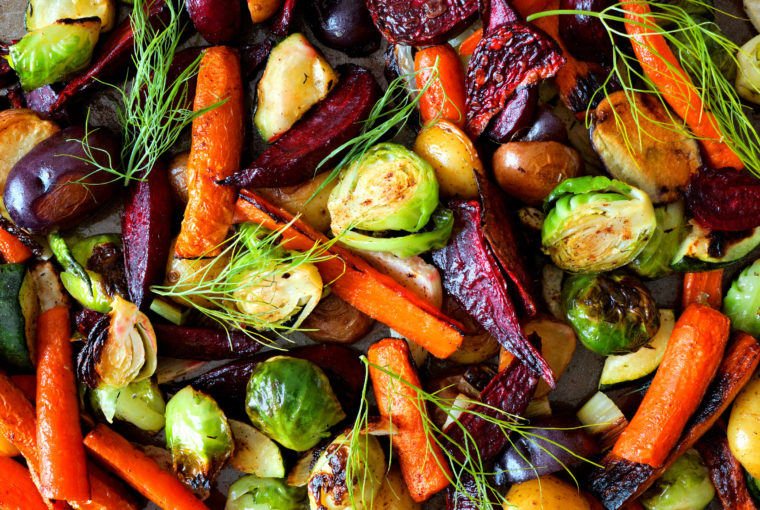After a long, hot summer, autumn is always a welcome season, with cool, crisp weather, the changing foliage, and cozy oversized sweaters. It’s also a traditional time of harvest—some of the best fruits and vegetables have ripened to perfection.
Ripe fruits and veggies don’t just taste good. Seasonal, fresh-picked produce is often at peak nutritional value, which means it’s not only fresher and more flavorful but packed with vitamins and nutrients. This is the best time of year to try some new, nutrient-packed, healthy fall recipes.
Sweet potatoes
A healthier alternative to a russet potato, sweet potatoes make a great side dish to any meal, and they’re fresh and in season in the fall. Packed with immune-boosting vitamins A, K, and C, they’re also a great source of fiber. Sweet potatoes are delicious served sweet—try them mashed with roasted marshmallows on top—or savory—think roasted with garlic, butter, and salt. They can be baked into biscuits and also make incredibly tasty fries. And who doesn’t like fries, right?
Beets
Did you know beets can improve your exercise routine? Beets contain inorganic nitrate, which the body converts into nitric oxide. This expands blood vessels, increases blood flow, and improves cardiovascular function. Studies have also shown the nutrients in beets reduce how hard your heart works during exercise, enabling you to exercise longer and reduce recovery time.
Unsure how to eat beets? Raw beets can be chopped and sprinkled on a salad or added to a smoothie. Beets can be baked, boiled, or simmered in this delicious sauce and served as a great side dish.
Pears and apples
These fall favorites are packed with fiber, and their skins are rich in nutrients. They taste especially amazing at this time of year.
Apple skin contains flavonoids which may improve brain health. Pears and apples can be eaten plain or added to salads. They make a great addition when diced and added to hot whole-grain cereals, like oatmeal. They can also be added to smoothies or incorporated into other fall recipe ideas.
Winter squash and pumpkins
Squash and pumpkins are both great sources of beta carotene, which the body converts to vitamin A. This vitamin is essential for eye health and a strong immune system. Vitamin A also helps maintain the lungs, heart, and kidneys. In addition to vitamin A, squash and pumpkin contain heart-healthy fiber, potassium, and vitamin C.
Squash and pumpkin can be roasted, grilled, mashed, baked, and even paired with bay leaves and cinnamon to create a festive fall soup. Canned pumpkin may be used in various recipes, from whole wheat pumpkin pancakes to easy pumpkin cookies, to pumpkin chocolate chip bread. Many healthy fall recipes include squash and pumpkin, so do an online search and see what you find.
Artichokes
‘Tis the season to break out the artichokes. Fresh artichokes, while containing more antioxidants than any other vegetable, are also delicious. They’re sold at almost every grocery store and are easy to prepare. So why don’t you give artichokes a shot and try the most amazing roasted artichokes ever.
Brussels sprouts
This tiny, green gem of a vegetable contains sulforaphane, a potent chemopreventive agent researched for use in cancer prevention. Brussels sprouts are also rich in healthy antioxidants and are full of fiber. Win, win, win.
The only problem is most people turn their noses up at brussels sprouts. If that’s the case with you, it probably means you haven’t had brussels sprouts that were prepared well. Preparation is key! Boiled and steamed brussels sprouts turn mushy. So if you’re looking to incorporate these fall beauties into your diet, try making the best brussels sprouts ever. Your mouth will thank you, and so will your health.
True health begins in your cells, and diet is a very big part of that. That’s why ASEA creates some one-of-a-kind food supplements* because even with the best diet, it’s hard to get all the nutrients you need.
* Food supplements shall not be used as a substitute of a varied and balanced diet and a healthy lifestyle.
